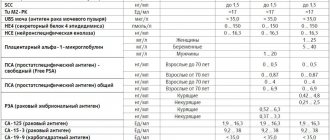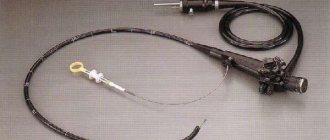Tumor marker CA 242 is the synthesis of protein and carbohydrate, a special substance also called a glycoprotein. It was discovered more than thirty years ago, and today the marker is successfully used in oncology. By analyzing the level of this type of antigen, you can obtain accurate information about whether the patient has cancer of the digestive system. This is important because half of the people sick with a malignant disease are between twenty and thirty years old. Therefore, it is important to detect the disease in a timely manner in order to successfully eliminate it.
What is this?
CA 242 tumor markers are highly specific signs of malignant tumors affecting the gastrointestinal system. If we analyze the indicators for this antigen in combination with other tumor markers (AFP, CA-72-4, Ca-50, etc.), it is even possible to determine the exact location of the tumor. And based on all the data, prescribe the appropriate cancer treatment.
What does the letter combination CA mean in the abbreviation of the marker name? It stands for the English term Cancer antigen, which literally translates as “cancer antigen.”
CA 242 substances are produced either by the tumor-affected tissue itself, or by the human body as a reaction to the tumor. The tumor marker CA 242, like other similar elements, will be a glycoprotein in nature. It is synthesized by profiling particles-cells of the digestive tract.
Note that this tumor marker is not specific - it is produced by a large volume of cells of the gastrointestinal mucosa. But it has one undeniable advantage - it is sensitive to malignant neoplasms. According to modern research, its specificity is 90%! In this vein, let us compare the tumor marker CA 242 with antigen 72-4, which is the main marker of stomach cancer. The specificity of the latter does not always reach even 80%.
Intestinal tumor markers
Tumor markers are:
- highly specific, indicating a specific type of tumor;
- nonspecific in the gastrointestinal tract, which indicates the development of oncology in the body as a whole.
What tumor marker indicates bowel cancer? A possible increase in the following main markers in the blood or urine - Tu M2-RK, CA 242, CA 19-9, CEA, CA 72-4 - indicates cancer in the intestine. Let's take a closer look:
- CA 72-4 and LASA-P - norm 6.3 ng/ml.
Antigens are common tumor markers for gastrointestinal cancers. Gastric and colorectal cancer is diagnosed based on protein concentration. Examine simultaneously with the test that determines CEA. Identified with tumors in the large intestine, non-small cell lung and stomach cancer. In healthy people, the antigen is extremely rare.
- CEA - cancer embryonic antigen - norm 0-5 ng/ml.
Identifies a tumor in the colon. When combining analysis to determine the level of markers CEA and CA-242, differential diagnosis of gastric oncology is carried out. Cells of the gastrointestinal tract of the fetus of pregnant women produce a tumor marker, but it is practically not found in adults.
- CA 19-9 - normal 0–37 ng/ml.
The carbohydrate antigen of epithelial cells indicates oncology at a value above 40 ng/ml and monitors the progress of treatment of colorectal and rectal cancer, tumors in the ovaries, esophagus, pancreas, colon, gall bladder and ducts. Used in monitoring for early diagnosis of cancer relapses. Since saliva, urine, gastric juice, seminal fluid, secretions of the duodenum, pancreas and gall bladder are saturated with antigen, it is impossible to accurately determine the location of the tumor.
To more accurately determine ovarian cancer, it is necessary to take tests for tumor markers, the Roma index, which will help diagnose the disease.
- Tu M2-RK - norm 15 ng/ml.
Tumor pyruvate kinase type M2 is a metabolic tumor marker, reflecting how metabolic processes change in cancer cells. Pyruvate kinase is a highly specific oncoprotein. It does not have any special organ specificity, so this marker indicates a variety of neoplasms in the early stages of development, metastasis and warns of relapses.
- CYFRA 21-1 is a marker of rectal tumor, normal is ≤3.3 μg/l.
The marker is a fragment of cytokeratin - 19, dissolves in the blood. Of the 20 marker types, each refers to a specific type of epithelium. Epithelium degenerating into malignant increases the expression of cytokeratins. This is common in non-small cell lung cancer (adenocarcinoma).
- AFP is the embryonic antigen of cancer, the norm is 0.5 to 2.5 units/ml.
Alpha-fetoprotein is produced by the liver and gastrointestinal tract of the pregnant embryo. Fetal malformations during pregnancy are diagnosed by analyzing AFP. In adults, it is a marker of the rectum and sigmoid colon.
We also recommend studying this topic:
Blood test for tumor marker SCC: interpretation and norm
What is tumor marker sensitivity?
To better understand the topic, we will analyze the important characteristics of all tumor markers. The first of these will be the sensitivity of the research methodology.
For example, it is said about this or that tumor marker: it has a sensitivity of 98%. What does it mean? Part of the people in the experimental group in whom the tumor marker revealed the presence of the disease. How did this number come about? There were, for example, 100 people in the group who were actually diagnosed with stomach cancer. A blood test for tumor markers was able to confirm the presence of the disease in 98 out of 100 patients.
As you can see, sensitivity metrics are very important. They indicate the likelihood with which a tumor marker is able to identify a really existing and progressive pathology. If it has high sensitivity, then there is enough data on it for a specialist to exclude one or another diagnosis in relation to his patient.
Sensitivity CA 242
Let's return to the tumor marker CA 242. Studies confirm its sensitivity of 40%. At first glance it seems that the value is too small. After all, the study confirmed the pathology in only 40 sick people out of 100.
But here it is important to compare with other tumor markers. For example, the sensitivity of CA 19-9 (a tumor marker for pancreatic cancer) is only 29%. In addition, the following factor is important in relation to this element: it depends on the content of Lewis antigen in the body. Indeed, on the basis of this substance, the synthesis (formation) of CA 19-9 occurs. Statistics show that 5-7% of people will be mutants in the gene that encodes the Lewis element. Consequently, a test for the CA 19-9 tumor marker will generally not be able to detect the development of pancreatic cancer in them, even if it is present.
Deviations
To a small extent, the result can be increased in case of diseases not only of the stomach, but also of the rectum, liver, and bile ducts. If the antigen level is very elevated, then most likely the person has one of the following diseases:
- gastric oncology;
- colorectal cancer;
- malignant pancreatic tumor.
How much the indicator will be increased depends on what stage the pathological process is at. The higher the tumor marker number, the higher the stage of oncology. If the study is carried out after surgical treatment, as well as after radiation and chemotherapy, but the indicators still exceed the mark of twenty units per milliliter of blood, this indicates that the person will live no more than a year and a half. With a significant decrease in indicators after therapy, we can talk about a five-year survival rate, that is, a complete recovery of the patient.
We recommend reading Rea tumor marker: what it means and shows, the norm in women
In any case, it is worth remembering that an increase in this tumor marker should not immediately be regarded as the presence of a cancerous tumor. To make a final diagnosis, additional diagnostic measures are necessary.
What is tumor marker specificity?
The category “specificity” has something to do with the sensitivity of the tumor marker. What does it mean?
Let's look at the example again. A number of studies have shown that the specificity of a certain tumor marker was 85%. What does it mean? A study was conducted that involved a group of 100 people who did not have any type of cancer. Let's say stomach cancer. Their blood was analyzed for a specific tumor marker. The overall results showed that stomach cancer was detected in 15 completely healthy people. That is, the study gave a false positive result in 15% of 100% of cases. In 85% of healthy people, the response to the tumor marker was negative - there was no stomach cancer.
Nature CA 242
Tumor cells are not foreign. These are particles of one’s own body modified by pathology. If previously it was believed that only epithelial tissue could degenerate into a cancerous tumor, today oncologists are sure that a tumor develops on almost any matter.
Why are modified cells dangerous? They release their waste products into the intercellular space, into the blood. Under normal conditions, the concentration of these released substances is too low to be determined somehow. But with gastrointestinal tumors, cancer cells release a huge amount of such metabolic products.
These include the tumor marker CA 242. It is synthesized on the surface of the epithelial layer of the mucous membrane of the intestines and stomach, as well as the pancreatic ducts.
The tumor marker was discovered in the mid-90s of the last century. But its chemical structure has not yet been fully deciphered. It is a fairly large molecule with an extensive carbohydrate region. This characteristic makes it similar to a number of other “gastrointestinal” tumor markers.
An immunochemical study helps determine the presence of CA 242 in the blood. A section of the tumor marker molecule is identified by antibodies sensitive to it (it will be an antigen).
Indications for analysis
An analysis for the concentration of the gastrointestinal tumor marker CA 242 may be indicated in the following cases:
- Nonspecific symptoms of a neoplasm in the exocrine pancreas. These are, first of all, the patient’s complaints of pain in the left hypochondrium, itching, pain radiating to the shoulder and back, and a yellowish tint to the skin.
- Suspicion of tumor formation in the intestinal tract, transformation of a benign tumor into a malignant one.
- Cancer in medical history. The study is carried out to diagnose metastases.
- Monitoring the effectiveness of the course of treatment prescribed for a malignant tumor of the gastrointestinal tract.
- Preventive research for detected benign neoplasms - stomach ulcers, polyposis, etc.
The need for examination
What does the tumor marker CA 242 show? The indicator helps to identify pancreatic and intestinal carcinomas at an early stage of their progression.
Is research like this important? Yes, because oncological diseases of the gastrointestinal tract are sometimes very sudden and unpredictable. They pose a great danger for elderly patients with a history of benign formations in the organs of the gastrointestinal system.
What does tumor marker CA 242 mean? This is an indicator that detects a tumor before it can be recognized by clinical symptoms. It becomes noticeable to the patient only at the stage when the formation tissues begin to put pressure on the bile ducts and functional cells of the gastrointestinal tract, thereby causing pancreatitis in a person.
If a patient is predisposed to tumors developing in the digestive tract, he should periodically be tested for CA 242 as part of prevention.
What is the difference between a tumor marker
CA 242 is in a certain sense a unique tumor marker. On the one hand, it cannot be classified as particularly specific research. An increase in CA 242 level indicates the development of a tumor process in virtually any part of the digestive tract, without any specification. On the other hand, this CA 242 tumor marker is an indicator responsible for diagnosing the pathological process in the early stages of its development. Increasing its level can help diagnose relapse of the disease or the formation of metastases 5-7 months before other manifestations.
Any study has a certain value only in combination with other diagnostic methods. In itself it does not have such high value as when compared.
Interpretation of analysis results
Let us note right away that deciphering CA 242 tumor markers is the prerogative of a qualified doctor. Only he will be able to correctly interpret the results of the analysis and provide the patient with all the comprehensive information about his state of health.
The description of CA 242 tumor markers in our article is purely for informational purposes. The most common pathologies are presented by deviations in indicators.
So, possible diagnoses for various deviations from the norm (0-20 IU):
- Values are around zero (0-3 IU). These indicators indicate the absence of any pathological neoplasms in the organs of the gastrointestinal system.
- Values up to 10 IU. The presence of inflammation in the gastrointestinal tract. This could be a peptic ulcer of the duodenum or stomach, gastritis, pancreatitis, etc.
- Values are within 10-20 IU. What does the tumor marker CA 242 show in women and men in this case? There are many probable causes: inflammatory processes affecting the gastrointestinal tract, benign formations on the epithelium of the stomach, pancreas or intestines. In this way, effective treatment of a tumor (benign or malignant) affecting the digestive system can be determined. Also, this deviation in some cases indicates the beginning of the development of carcinoma. To gain confidence in this diagnosis, a specialist needs to monitor the dynamics of changes in indicators for this tumor marker.
- Values are within 20-30 IU. The antigen level indicates the development of a malignant tumor in one of the organs of the digestive tract. This indicator may also indicate a large benign neoplasm.
- Values greater than 30 IU. Development of a malignant tumor within the gastrointestinal tract.
So we have analyzed the decoding of the tumor marker CA 242, the norm for women and men. Note that the level of antigen in this case will always correlate with the size and stage of tumor development. And this makes diagnosis very easy. For example, if the concentration of a tumor marker is more than 30 IU, then this already excludes the development of a benign tumor.
Normal level
In a person who does not suffer from cancer, Ca-242 data should not exceed 20 units/ml. If this indicator is slightly higher, then the patient must undergo a comprehensive diagnosis to confirm the diagnosis (or refute it).
Remember! A slight increase in the Ca-242 tumor marker may be due to the presence of inflammatory processes in the body in the gastrointestinal tract or benign neoplasms.
If the Ca-242 level is close or equal to zero, then this indicates, with a greater degree of probability, that there are no tumors in the pancreas or intestines.
If it is closer to 20, there is a reason to order additional diagnostic tests. Low values of this indicator indicate successful treatment and a reduced risk of relapse of the disease. In healthy people and people with gastro- and pancreas-mediated benign formations, this indicator may be insignificantly small or not determined at all. In the majority of people, more than 90% of healthy people, the level of Ca-242 is less than 20 units/ml. Thus, a reading above 20-30 units/ml may be evidence of a tumor process in the body. But this must be confirmed by other laboratory and diagnostic tests.
Don't waste your time searching for inaccurate cancer treatment prices
*Only upon receipt of information about the patient’s disease, a representative of the clinic will be able to calculate the exact price for treatment.
Additional examination if a tumor is suspected
If a malignant tumor is suspected, then the next diagnostic measure is tomography, ultrasound - ultrasound examination of the abdominal organs. These techniques determine the location of the tumor, its size and a number of important characteristics that indicate the degree of malignancy - the contours of the tumor, the development of its vascular network, etc.
By comparing data from the analysis of the CA 242 tumor marker and the results of hardware diagnostics, the treating doctor can accurately judge the degree of aggressiveness of the identified pathological tumor.
Indications for testing for tumor markers
To conduct an analysis for the CA 242 tumor marker, strict indications are required:
- In combination with other oncological markers in case of suspicion (based on the results of non-immunochemical research methods) of cancer of the pancreas, stomach or large intestine and rectum.
- To assess the effectiveness of surgical treatment, chemotherapy and radiotherapy.
- In order to predict the occurrence of relapse of a cured disease or the appearance of metastases.
Taking into account the imperfection of methods for determining tumor markers, there is a chance of confirming the tumor process. When examined for CA 242 in individuals with pancreatic cancer, this marker shows a positive result in 70-80% of cases. With stomach cancer, the chance of getting a positive result is much lower - 40%. Intestinal cancer is confirmed in 50-80% of cases.
It should be taken into account that an increase in the level of tumor markers is characteristic not only of malignant neoplasms, but also of various somatic diseases. It is possible to increase the level of CA 242 in chronic diseases of the liver and stomach, cholecystitis, chronic pancreatitis and colitis. This is why it is so important to evaluate the entire range of available information.
Preparation for analysis
In order for the study to show the most accurate results, the patient is required to prepare for the blood sampling procedure. These are fairly simple steps:
- The day before the procedure, avoid drinking tea or coffee with added sugar.
- It is best to schedule blood collection in the early morning. It is carried out only on an empty stomach! At least 8-12 hours should have passed since your last snack.
- You are not limited in the use of clean drinking water - non-carbonated, without flavoring additives and coloring components.
- The day before the procedure, eliminate fatty and spicy foods from your diet. Why is this necessary? Such foods irritate the intestines and pancreas. And this may result in a false result in the tumor marker study.
If the results of the analysis are questionable, then it makes sense to repeat the examination after 5-7 months, in compliance with all the rules described above.
A blood test for the tumor marker CA 242 is a necessary preventive procedure, which helps to identify cancer of the gastrointestinal tract at an early stage. It is also used to evaluate the effectiveness of treatment and monitor benign formations. Among similar tumor markers, this one is distinguished by its high specificity and not the lowest sensitivity.
Importance of Glycoprotein Testing
Those faced with cancerous tumors of the digestive system are aware of the importance of periodic analysis of CA 242 levels. These patients undergo this procedure every six months to monitor the effectiveness of treatment and prevent the return of the disease.
To prevent progression of the disease, early oncological diagnosis of the digestive organs should be carried out. In the case of a prolonged illness, treatment is more difficult, and the chances of recovery decrease.
To increase the diagnostic efficiency, you need to adhere to a diet (avoid fatty and fried foods).
Doctors' recommendations should be followed. You cannot refuse procedures that will determine the presence of a malignant tumor.
Regular visits to doctors and testing for glycoprotein will help identify the disease before its noticeable manifestations begin. Diagnosis of the health status of men and women includes this analysis. It is absolutely impossible to ignore examination for oncology of the digestive system. The probability of an accurate result is 98% if you follow the recommendations on the eve of the procedure. The level of concentration will help determine the stage of the disease and its neglect.
Elderly people must take care of their digestive tract, come to an appointment with an oncologist and have their intestines diagnosed for the presence of malignant formations. Old people have a high risk of getting sick.
X-ray and ultrasound examinations will not show the full picture of the disease. It is important to conduct a series of studies. This is the only way to obtain objective information about the patient’s health and determine whether there is a tumor in the body or not.
If a woman or man discovers cancer in time, close relatives will already be warned about the likelihood of such a pathology. By taking care of yourself, you will be able to preserve the health of your descendants.











